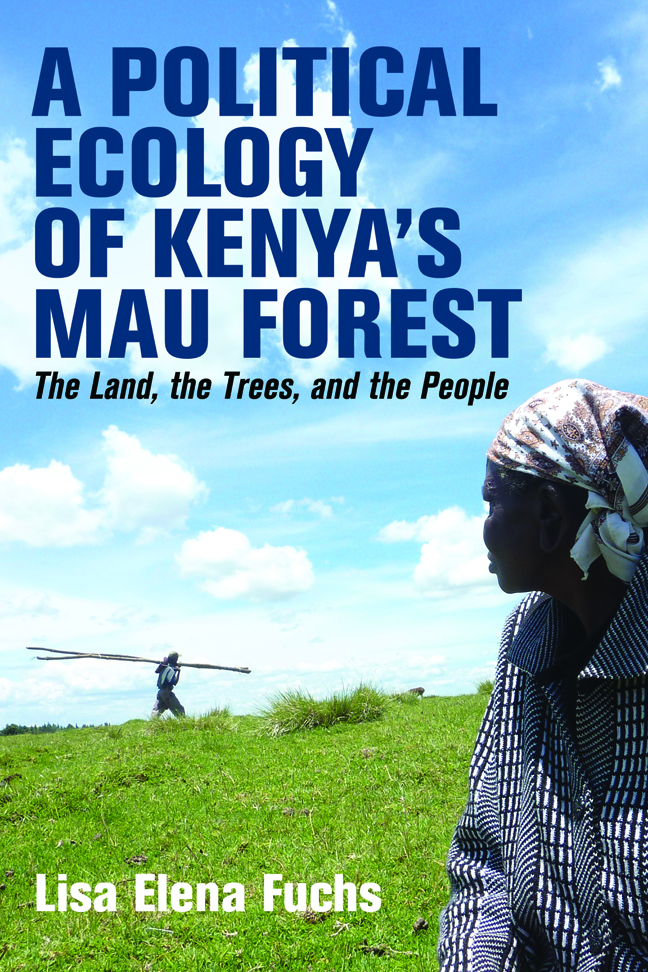Book contents
- Frontmatter
- Dedication
- Contents
- List of Illustrations
- List of Abbreviations
- Glossary
- Acknowledgements
- Introduction
- 1 The Politics of Conservation Aid: The Development State and ‘Saving the Mau’
- 2 Institutional Failure or Setting Priorities? The Continuation in Exploitation-focused Forest Management
- 3 The Political Economy of Land: Maintaining Control over Forest Land Allocation and Distribution
- 4 The Politics of Belonging and Exclusion in Response to Changes in the Eastern Mau: The Complex Definition of Legitimate Land and Resource Use
- Conclusions
- Appendix 1 Medicinal plants used and inventoried by survey respondents in the Eastern Mau in 2012–2013
- Appendix 2 Full overview of interview partners
- Bibliography
- Index
- Eastern Africa Series
2 - Institutional Failure or Setting Priorities? The Continuation in Exploitation-focused Forest Management
Published online by Cambridge University Press: 10 January 2024
- Frontmatter
- Dedication
- Contents
- List of Illustrations
- List of Abbreviations
- Glossary
- Acknowledgements
- Introduction
- 1 The Politics of Conservation Aid: The Development State and ‘Saving the Mau’
- 2 Institutional Failure or Setting Priorities? The Continuation in Exploitation-focused Forest Management
- 3 The Political Economy of Land: Maintaining Control over Forest Land Allocation and Distribution
- 4 The Politics of Belonging and Exclusion in Response to Changes in the Eastern Mau: The Complex Definition of Legitimate Land and Resource Use
- Conclusions
- Appendix 1 Medicinal plants used and inventoried by survey respondents in the Eastern Mau in 2012–2013
- Appendix 2 Full overview of interview partners
- Bibliography
- Index
- Eastern Africa Series
Summary
The scramble for the Mau Forest began with the colonial government's need for fuelwood, especially for their newly built railway, by the end of the 19th century [1/021]. After forest reservation had begun as early as 1911 in some parts of the country (Bassett & Crummey, 2003), most of the Mau Forest was gazetted in 1932 (GoK, 2009e), which allowed the colonial government to define the forest as an exploitable commodity. The Eastern Mau Forest, specifically, was gazetted in 1941 (Republic of Kenya, 2016b). The primary purpose of creating this forest reserve was to produce timber and wood, two of the most critical resources needed during the construction and expansion of the new colonial economy, and the sprawling railway line particularly [1/021]. After Independence, the Government's approach to forest management continued relying on forestry-based perspectives that had concentrated on commercial wood and timber production since colonial times (GoK, 2009e).
The central paradox of the politicised environment: The state's roles as both developer and protector
The features of the politicised environment of forest governance in Kenya were discussed in detail in the previous chapter. Additional features introduced here focus specifically on commercial forest exploitation as an important sector of the national and local economy, its principal actors, and its ties to the Government.
Structural focus on forest production and development rather than protection
The state is the most influential actor in defining environmental and land-use management priorities, practices, and policies in Kenya, as in most countries. Yet, the state's role in terms of shaping the environment is fundamentally influenced by a ‘central paradox’, ‘an inherent, continuing potential for conflict between the state's roles as developer and as protector and steward of the natural environment on which its existence ultimately depends’ (Walker, 1989, p. 32). This paradox is often particularly evident in forest management policies since forests are primarily framed as a renewable source of forest products, including wood, timber, and non-timber forest products (NTFPs), also called non-wood forest products (NWFPs), despite encompassing primary natural and secondary plantation forests, and despite the recognition that forests play various other roles.
- Type
- Chapter
- Information
- A Political Ecology of Kenya's Mau ForestThe Land, the Trees, and the People, pp. 115 - 143Publisher: Boydell & BrewerPrint publication year: 2023



